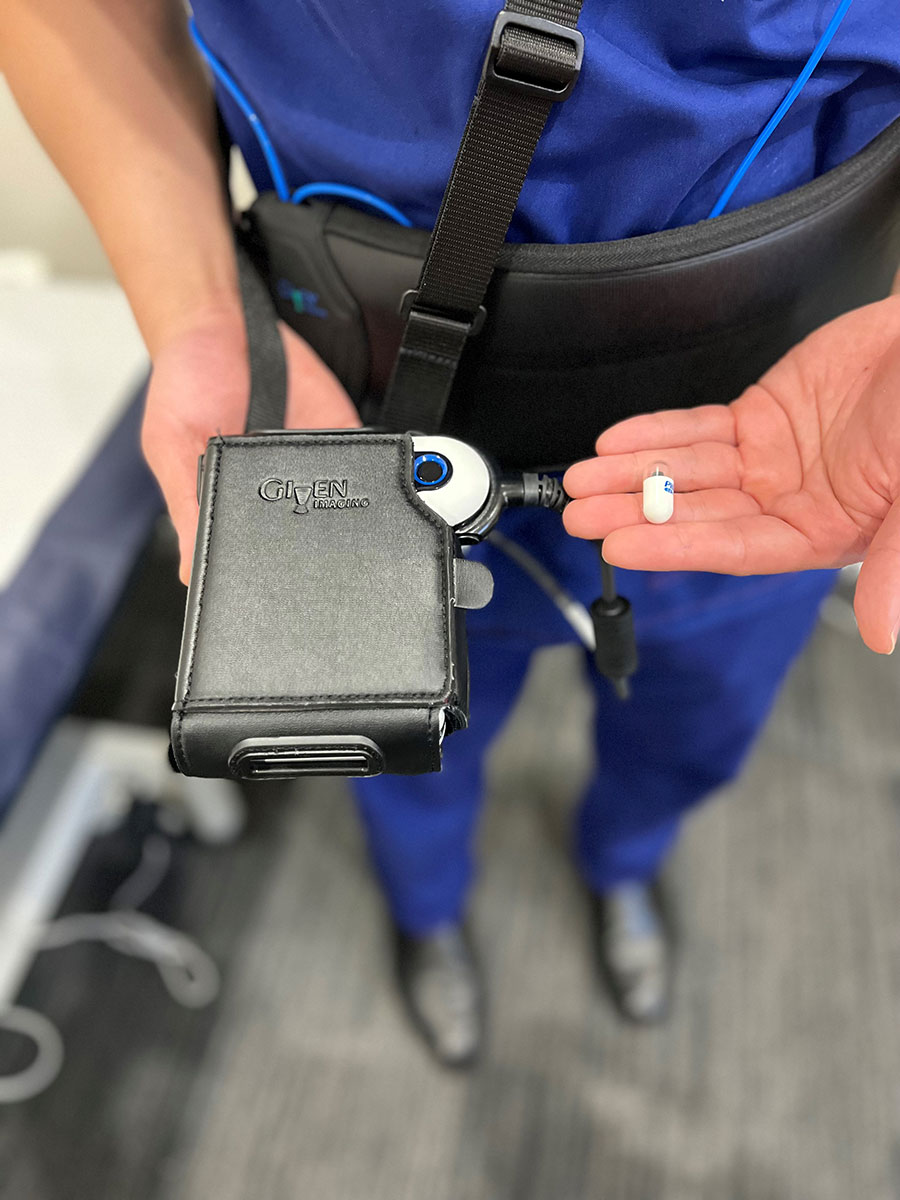- The capsule endoscopy is a procedure that enables the inside of the small intestine to be visualised, typically for patients with iron deficiency anaemia or gastrointestinal bleeding whose causes couldn’t be identified through gastroscopy and colonoscopy.
The capsule endoscopy (“pill cam”) is a procedure designed to visualise the inside of the small intestine. It is usually indicated for patients with iron deficiency anaemia or gastrointestinal bleeding in whom the gastroscopy and colonoscopy did not identify a cause in the stomach and large bowel respectively. The capsule endoscopy looks for sources of bleeding in the small intestine that may contribute to iron deficiency anaemia and bleeding. The test is very safe. It does not involve any sedation or needles.
Frequently asked questions:
1. How do I book the procedure?
Your specialist will need to complete a booking form and then you will need to call SGS on 9874 125 to arrange a date for your procedure.
2. What preparation is required for a capsule endoscopy?
A partial bowel preparation (laxative) is required, similar but less extensive than what is used prior to a colonoscopy – the day before the procedure, you can consume clear fluids after midday and then take two sachets of Picoprep in the evening around 6pm and 8pm. A detailed bowel preparation handout will be provided to you at the time of booking. Please read it carefully.
3. How long does the test take?
You will need to present to the SGS consulting rooms in the morning of your scheduled procedure, around 8.15am. You will be reviewed by the doctor and then swallow the capsule with a glass of water. You may then go home and return around 4.30pm for the data receiver belt to be removed.
4. Can I eat while I have the capsule?
You can consume clear fluids (e.g. water) 2 hours after the capsule was ingested and then you can have a light meal 4 hours after the capsule was ingested.
5. What happens to the capsule?
After passing through the small intestine the capsule then passes through the large intestine (colon) then out in the stool where it gets flushed away in the toilet. This usually occurs within 1-3 days, and most patients are unaware of it. The capsule is single-use and does not need to be retrieved. It can be safely flushed down the toilet.
6. What are the risks?
Complications of capsule endoscopy are very uncommon. The most common complication is capsule retention, where the capsule “gets stuck” inside the intestines. This may occur in 1/300 cases, and usually occurs at a site where a lesion is located. It is not dangerous for the capsule to sit inside the body for several months. Sometimes, if the capsule does not pass spontaneously, it may need to be removed via an endoscopy procedure or an operation.
It is possible that very rare complications may occur that cannot be anticipated. It is also possible for the capsule to miss lesions due to inadequate views or due to an incomplete study. Very occasionally a procedure will need to be repeated.
7. What reasons may make it unsafe or unwise to proceed with a capsule endoscopy?
a. Upcoming scheduled MRI
b. Known small intestinal strictures
c. Pacemaker or implanted cardiac device
d. Pregnancy
e. Severe swallowing difficulties
8. How can I get my results?
After the images have been reviewed, the report will be sent to your referring gastroenterologist and your general practitioner.



